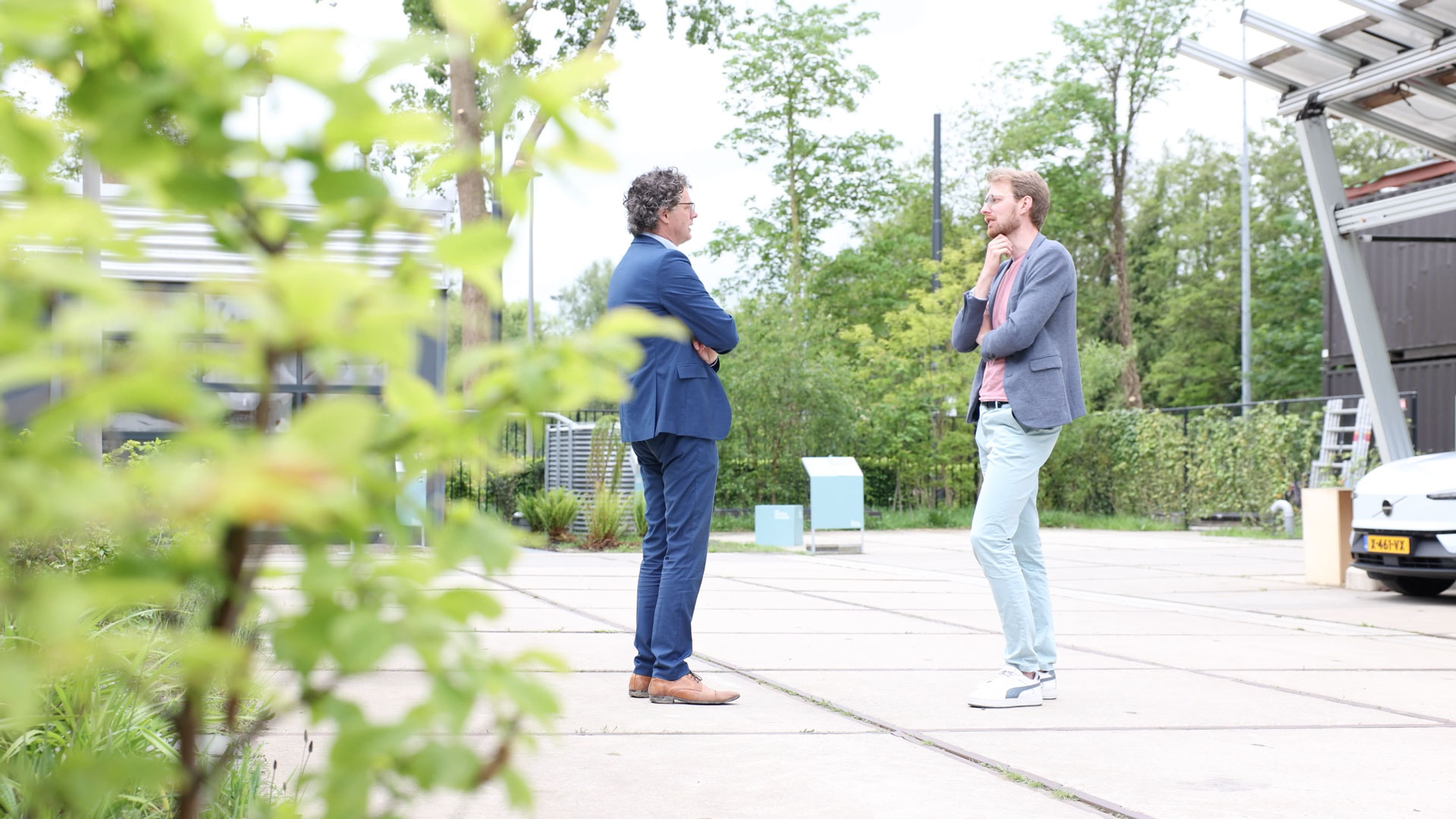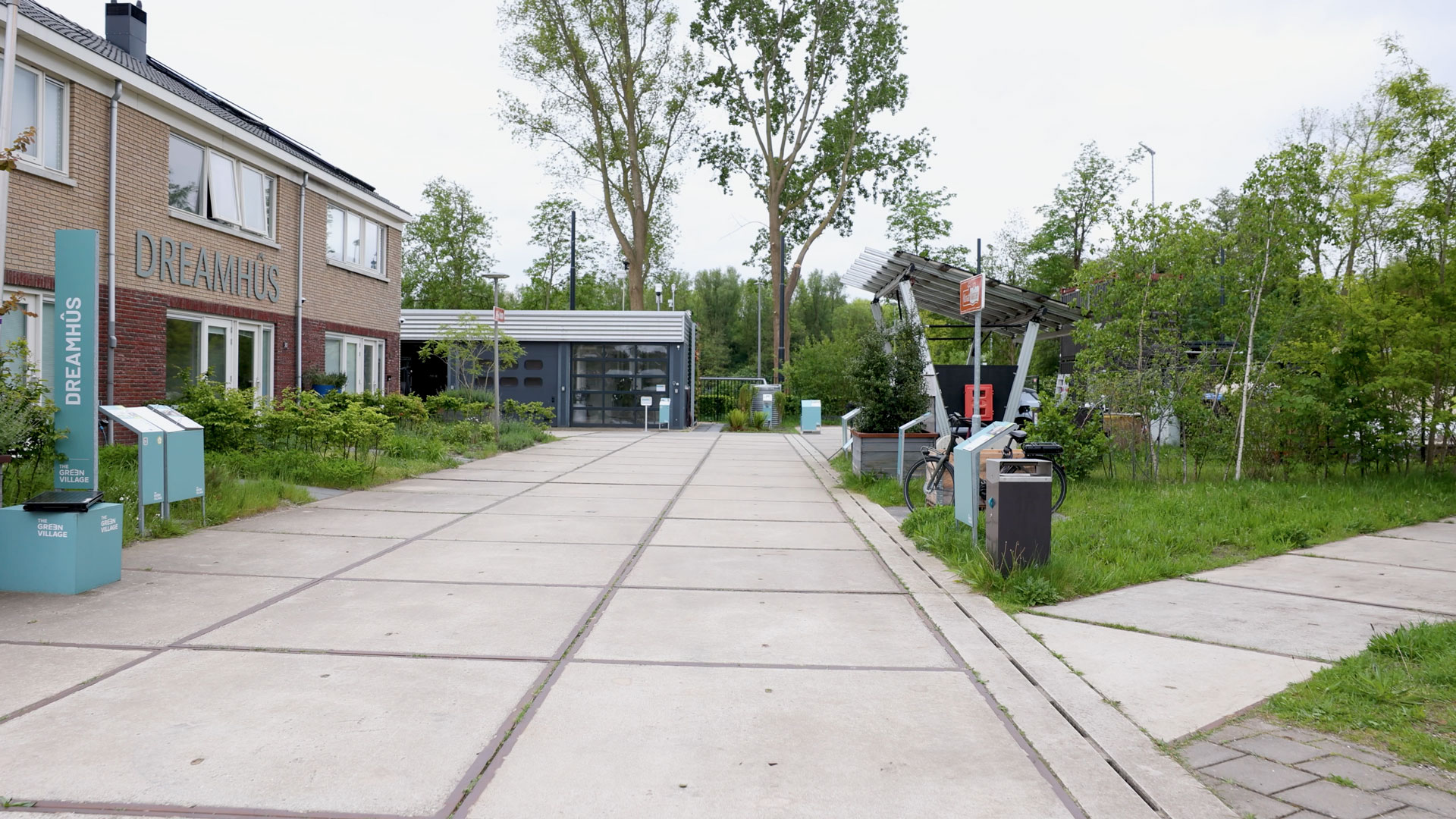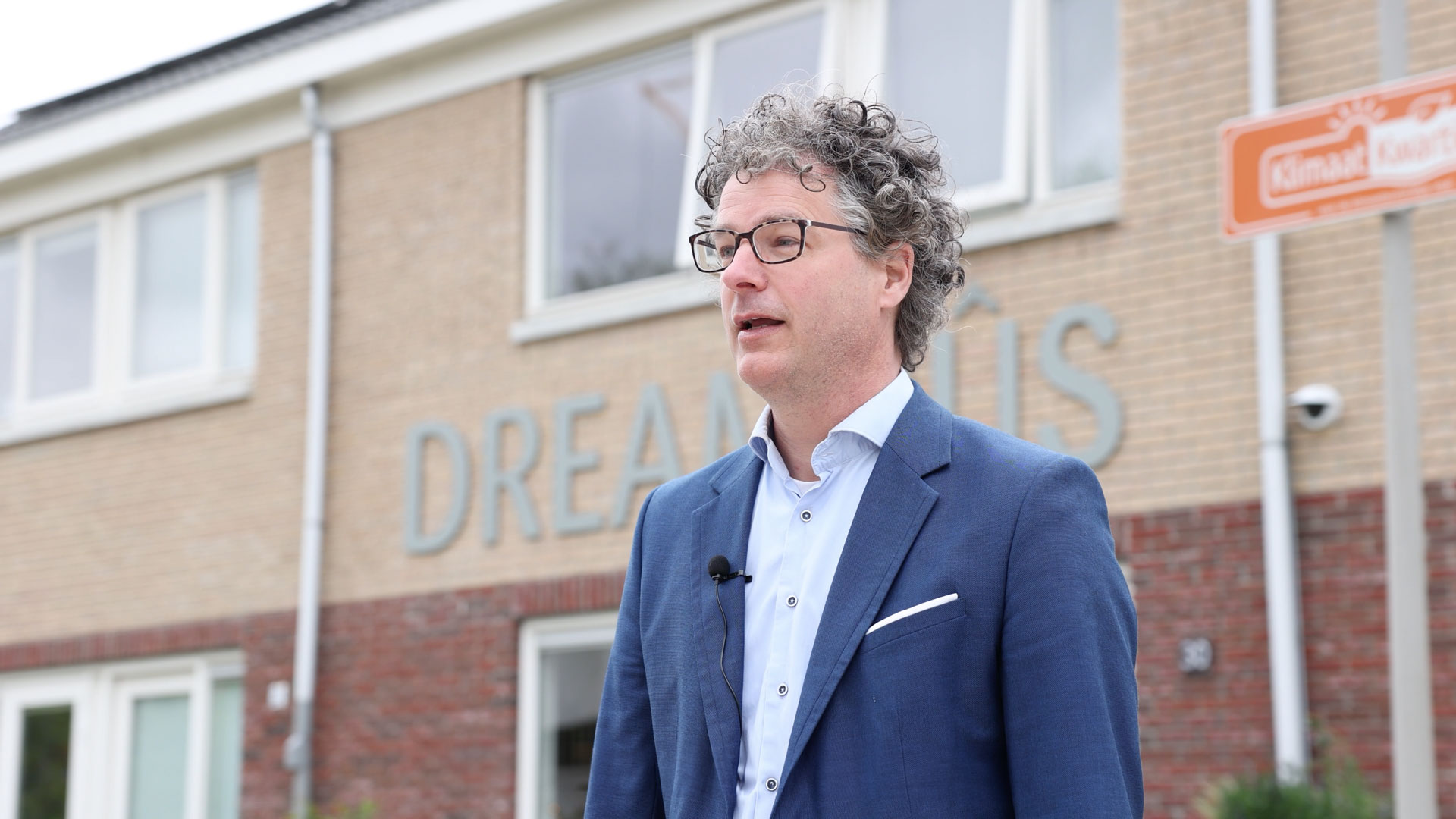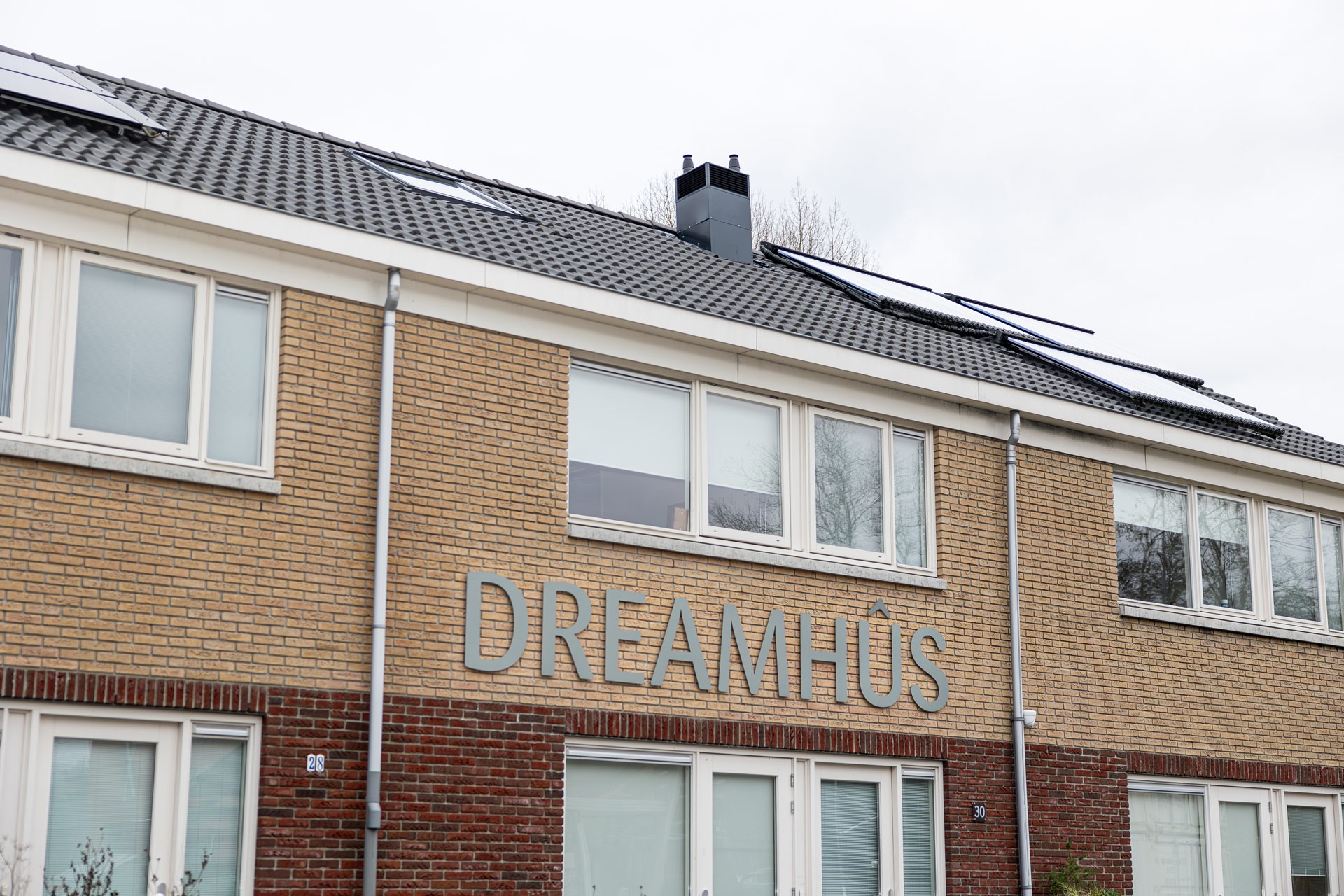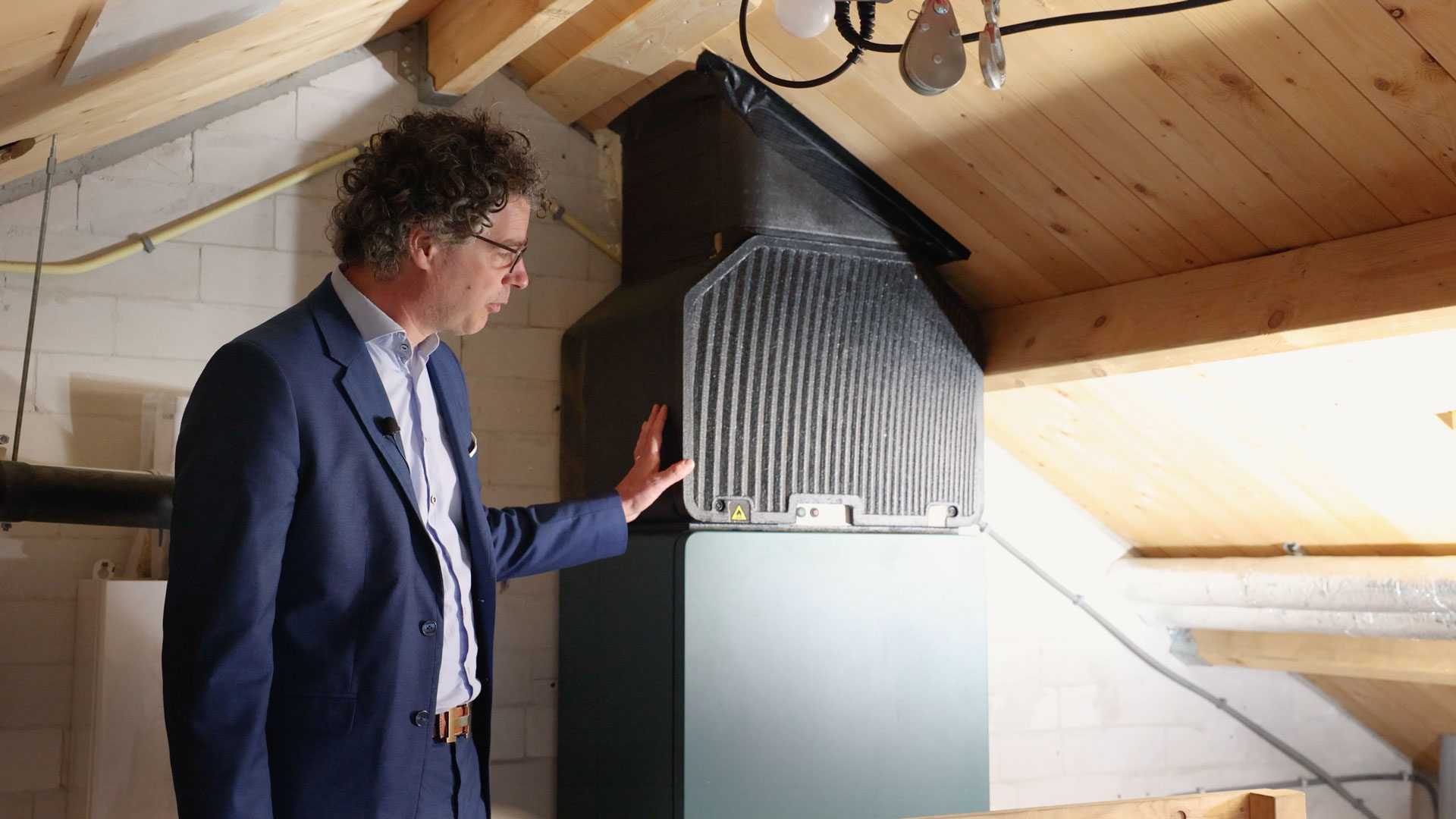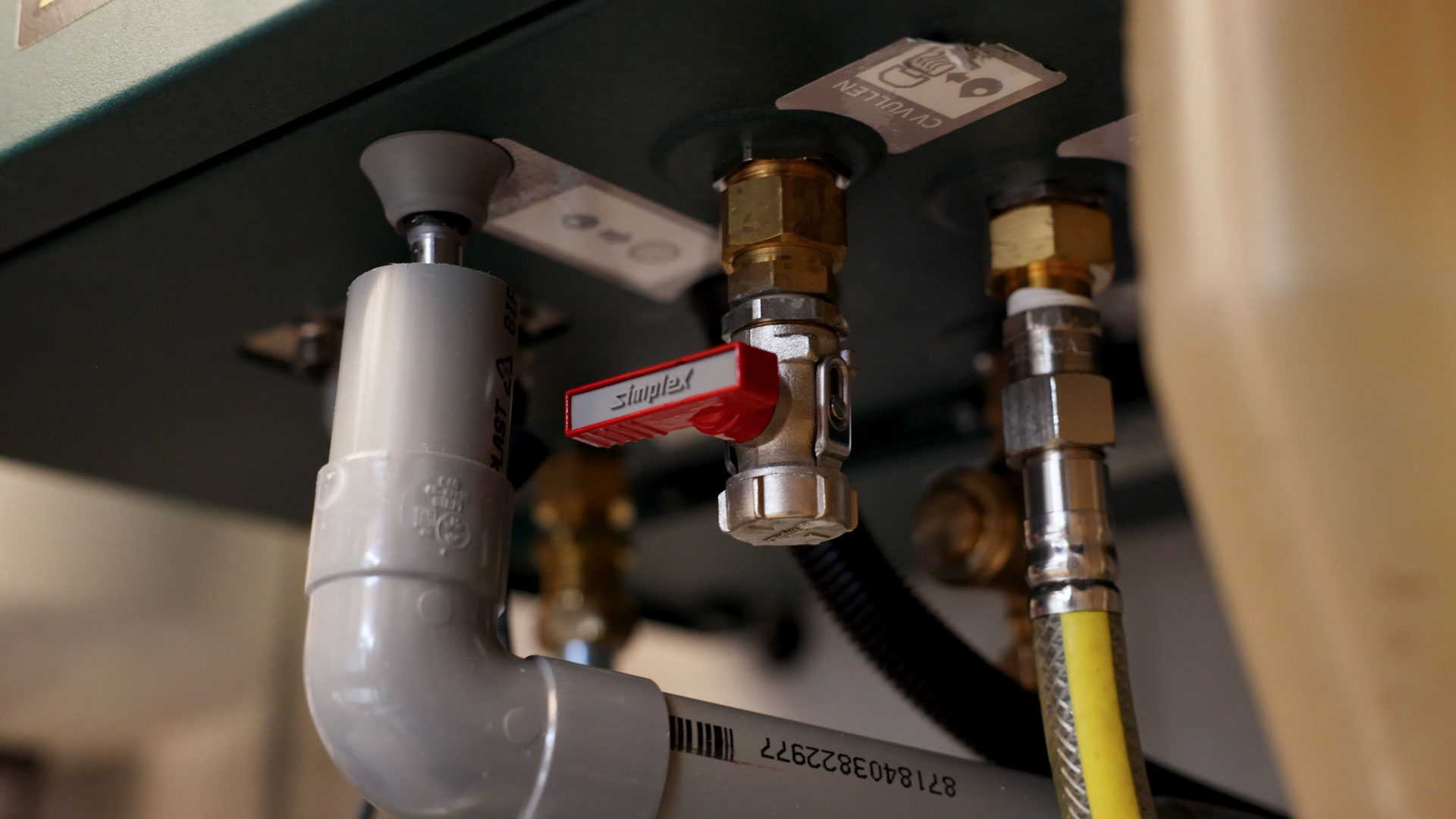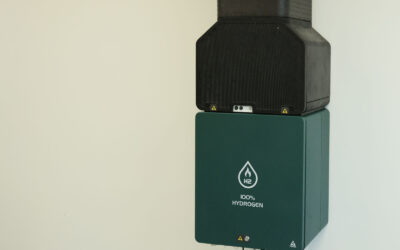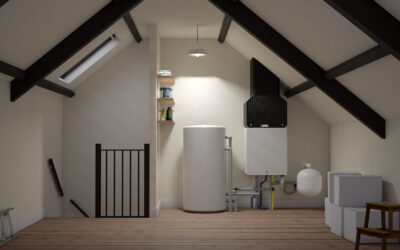Cooll and The Green Village
This title might trigger memories to Kool and The Gang, but that’s not what this blog post is about. It concerns an open-air laboratory at the TU Delft Campus where sustainable innovation in the built environment can be tested. Let’s dive in!
What is The Green Village?
A sustainable future requires innovative ideas and new useful methods and techniques. At The Green Village, knowledge and educational institutions, companies, governments and citizens research, experiment, validate and demonstrate their sustainable innovations. The Green Village is a regulation-free “open-air laboratory” on TU Delft Campus with a focus on the built environment where testing can be done at district, street and building level. With access to TU Delft’s innovation ecosystem, science is literally around the corner. It’s a place where people live, work and learn.
Sustainable heat in existing homes
It is currently a major challenge to provide existing homes with sustainable heat. Cooll’s gas-fired heat pump, powered by heat, offers a solution. Residents can save up to 40% on gas consumption, while electricity consumption hardly increases.
Grid congestion becomes a social problem
We want to get rid of fossil fuels and switch to sustainable energy as quickly as possible. Heat pumps prove to be a great solution. But those are not always suitable for existing houses and they use a lot of electricity. This creates grid congestion: a traffic jam on the electricity grid. New companies or homes can’t be connected to the electricity grid, due to limited capacity in a neighborhood.
Cooll offers an innovative solution
Due to grid congestion it’s not possible to switch off gas and electrify all homes in the Netherlands at once. We therefore need different approaches. Cooll provides one of them: the heat-driven adsorption heat pump. This boiler saves 30 to 40 percent of gas compared to a conventional HR107 central heating boiler. The Cooll thermal heat pump looks like a other central heating boiler with standard connections. It can therefore be replaced one-on-one. The boiler still runs on natural gas, but the burner is now being adapted to be able to run on sustainable gases such as hydrogen.
A thermal heat pump within a day
Without the need for home renovation, the central heating boiler can be replaced by the Cooll thermal heat pump within a day. The system operates at a temperature suitable for conventional radiators, so those do not have to make way for underfloor heating. A small chimney has been placed on the roof of DreamHûs, where the Cooll thermal heat pump is installed. The heat pump extracts energy from the outside air through this chimney. So no outdoor unit is needed and there is no noise pollution. The heat pump mechanism is quiet, because the compressor has no moving parts.
What is DreamHûs?
Sustainable, affordable and comfortable living, that is the idea behind DreamHûs. The DreamHûs experiment is a collaboration between WoonFriesland, Bouwgroep Dijkstra Draisma, The Green Village and the Friesland Residents Council. Making existing buildings more sustainable in an affordable way is one of the biggest challenges in the Dutch housing market. That is why we have built three replicas of 1970s homes with different energy labels.
Cooll’s test setup at DreamHûs
At DreamHûs, Cooll tests gas savings, ease of installation and comfort of the installation. The measurement results, which become transparent through a data platform, lead to improved controls. In addition, the test provides input for improving robustness and the interface with the user and is the basis for a hydrogen pilot.
Patented technology of Cooll
The technology behind Cooll’s thermal heat pump is a thermal compressor. Instead of common electric compressor, the pressure difference is created with a thermal compressor. The basic principle is adsorption of the natural refrigerant NH3. The compressor alternately has a cold part and a warm part, where the system is heated by a gas burner before the compressor releases its heat to the home. When the compressor heats up, high pressure refrigerant is released. The warm side is cooled at the same time and so heats the home. At the same time, the refrigerant in this compressor adsorbs and the pressure is reduced. After a few minutes the cycle is reversed.
Suitable for high temperature heating
The internal drive temperature in the heat pump is 180 Cº. This ensures efficiency, even when the output temperature is 70 Cº and the outside temperature is low. The heat pump’s power will be 10-15 kW, which means that tap water can also be prepared efficiently in combination with an existing commercial buffer. These are fundamental reasons why this technology is suitable for existing homes.
Measurements of SGUE and SCOP
Independent measurements have shown an SGUE (seasonal gas efficiency) of 1.50 at lower value. This means that a third of the gas is saved, without additional electricity consumption (compared to a HR boiler: 100W instead of 60W). An SGUE and a SCOP (seasonal coefficient of performance) can’t be compared one-on-one, because of electricity losses during generation of the electricity used by electric heat pumps, especially during winter and peak demands. Based on the current energy mix (solar, wind, gas, coal and nuclear energy), an SGUE of 1.50 can be compared to a SCOP of 3.31. This is quite high for a heat pump that supplies high output temperatures and tap water.
Demonstration at DreamHûs
In this video Stefan van Uffelen, one of the founders of Cooll, demonstrates the test setup at DreamHûs.

